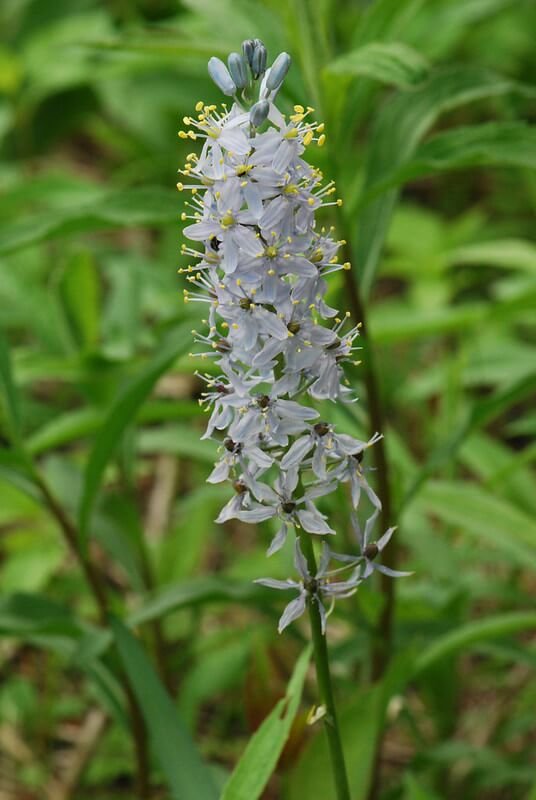Silky Aster (Symphyotrichum sericeum)
The flowers of Silky Aster attract many kinds of native bees and smaller butterflies (illinoiswildflower.info). It is also the potential host to 13 species of butterflies and moths in our area (nwf.org). Silky Aster is such an attractive aster, with its blue-green foliage, and pretty flowers; and it is considered threatened in Michigan, so just another great reason to grow this plant (mnfi.anr.msu.edu)). This aster seems to develop more slowly and does not like competition from taller plants. Mammals may browse the young foliage, however, it was found to increase in abundance as a result of grazing, so keep an eye on it and see what happens (ilinoiswildflower.info).
Photo credit: Peganum
The flowers of Silky Aster attract many kinds of native bees and smaller butterflies (illinoiswildflower.info). It is also the potential host to 13 species of butterflies and moths in our area (nwf.org). Silky Aster is such an attractive aster, with its blue-green foliage, and pretty flowers; and it is considered threatened in Michigan, so just another great reason to grow this plant (mnfi.anr.msu.edu)). This aster seems to develop more slowly and does not like competition from taller plants. Mammals may browse the young foliage, however, it was found to increase in abundance as a result of grazing, so keep an eye on it and see what happens (ilinoiswildflower.info).
Photo credit: Peganum
The flowers of Silky Aster attract many kinds of native bees and smaller butterflies (illinoiswildflower.info). It is also the potential host to 13 species of butterflies and moths in our area (nwf.org). Silky Aster is such an attractive aster, with its blue-green foliage, and pretty flowers; and it is considered threatened in Michigan, so just another great reason to grow this plant (mnfi.anr.msu.edu)). This aster seems to develop more slowly and does not like competition from taller plants. Mammals may browse the young foliage, however, it was found to increase in abundance as a result of grazing, so keep an eye on it and see what happens (ilinoiswildflower.info).
Photo credit: Peganum
Life Cycle: Perennial
Sun Exposure: Full, Partial (Seems to prefer Full)
Soil Moisture: Medium-dry, Dry
Height: 0.5-2 feet
Plant Spacing: 1-2 feet
Bloom Time: September-October
Bloom Color: Lavender
Advantages: Pollinator Favorite, Bird Favorite
Host: Potentially 13 species of butterflies and moths use this as a caterpillar host plant in our area (nwf.org)
Species of Concern: State Status: Threatened (legally protected). State Rank: Imperiled (mnfi.anr.msu.edu).






